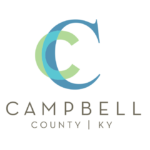New York City – March 1, 2018 – Today, L’Oréal USA announced its plans to achieve carbon neutrality in 2019 for all 21 of its U.S. manufacturing and distribution facilities with a financially sustainable approach that could potentially serve as a model to support new renewable natural gas (RNG) projects in the future. In order to reach this milestone, L’Oréal USA is adding to its diversified energy portfolio with RNG purchased from a new processing facility in Kentucky. L’Oréal USA’s long-term purchase commitment of the RNG was a key underwriting component that led to the financing of the project. This investment builds on L’Oréal USA’s commitment to Kentucky, which is home to its Florence haircare facility, the company’s largest manufacturing site in the U.S. and its largest worldwide by tonnage of products produced.
“Achieving carbon neutrality for all of our Operations facilities furthers our commitment to being a sustainability leader in the United States,” said Frédéric Rozé, President and CEO of L’Oréal USA. “We have seen that a dedication to sustainability fosters innovation, inspires creativity and builds a strong team spirit. This new milestone can be credited to our passionate teams and their vision in finding a new renewable energy approach that benefits one of our local communities while being a long-term, financially viable solution.”
L’Oréal USA currently has 17 renewable energy installations across the country, including large on-site solar arrays in Kentucky, Arkansas, and New Jersey, as well as wind turbines in Texas. Last year, the company completed the installation of a 1.4 MW solar array at its Florence, KY manufacturing facility, the largest commercial solar array in the state. L’Oréal USA has been operational in Kentucky for 25 years and currently has over 400 employees in the state. Haircare products for Garnier, L’Oréal Paris, Matrix and Redken brands are made at the nearly 700,000 square foot Florence plant.
Terry Gill, secretary of the Kentucky Cabinet for Economic Development, applauded the agreement and upcoming project. “Our team and other members of state and local governments worked closely with L’Oréal USA executives to make this day a reality. It serves as a prime example of Kentucky’s commitment to become one of the nation’s most business-friendly states. Our long-term relationships with Kentucky’s valued corporate citizens include providing the flexibility, knowledge and resources to help companies achieve their requirements, be they renewable power, low power rates, connections to suppliers and vendors, infrastructure improvements or other needs,” Gill said. “Working with L’Oréal USA to help it achieve its corporate responsibility goals also further solidifies the company’s commitment to the commonwealth, its Northern Kentucky plant and the jobs it provides to families in the region.”
Guided by L’Oréal’s Sharing Beauty with All global sustainability program, L’Oréal USA had already surpassed the company’s 60 percent carbon emissions reduction goal in absolute terms in 2017, reaching an 84 percent reduction from a 2005 baseline and achieving 100 percent renewable electricity use for all 21 U.S. manufacturing and distribution facilities. As the U.S. Operations team considered approaches to reach carbon neutrality, they were driven by L’Oréal’s sustainability philosophy to pursue a local strategy that would have a positive impact in the communities in which it operates while providing “additionality,” meaning the project would not be possible without the company’s committed involvement.
After an 18-month research phase, the team identified a potential renewable energy production solution utilizing landfill gas (LFG) from the Big Run Landfill in Ashland, Kentucky, which is 135 miles from the L’Oréal USA plant in Florence, Kentucky.
“Northern Kentucky is proud to be home to L’Oréal’s largest North American manufacturing operation. L’Oréal, a global cosmetic and manufacturing leader, has consistently embraced energy and sustainability innovations that benefit both the environment and the bottom line,” said Dan Tobergte, President & CEO of BE NKY. “We congratulate L’Oréal on their recent installation of solar panels at their Boone County operation and this new carbon neutrality achievement. We look forward to their continued leadership in production-oriented environmental strategies as L’Oréal continues to grow and prosper in our region.”
At the Center for Climate and Energy Solutions (C2ES) Climate Leadership Conference in Denver today, L’Oréal USA announced that it has signed a 15-year agreement to purchase approximately 40 percent of the RNG produced from the Big Run Landfill. The RNG L’Oréal USA purchases will be directed into the interstate natural gas transmission system and is expected to eliminate the carbon equivalent of 1.8 million gallons of gasoline consumed per year.
This spring, Ultra Capital-owned Big Run Power Producers will break ground on a new processing facility that will process the LFG from the landfill and condition it for use as pipeline quality RNG. Instead of flaring and destroying the LFG, it will be cleaned for use as RNG. Construction of the processing plant will begin in March 2018 and is expected to be completed by the end of the year. The project will generate 7-10 permanent jobs at the facility and utilize roughly 100 construction jobs during the buildout.
“Boyd County is excited to be a part of L’Oréal USA’s efforts to create a renewable energy solution for all of its Operations facilities, including its Northern Kentucky plant. We are particularly pleased that the Big Run Landfill will fulfill this innovative purpose and provide additional jobs to our region,” said Steve Towler, Boyd County Judge Executive. “This is terrific news that the gases from landfill will be used in a productive manner, something we have sought for several years as part of our agreed order for future landfill uses. We thank L’Oréal for believing in our region and for their commitment to Kentucky.”
While the Big Run Landfill project satisfied L’Oréal USA’s key principles of being local and providing a new renewable energy source, the project also needed to be financially sustainable for the company. High production costs and demand for RNG drive the market cost up significantly — up to eight times the cost of non-renewable natural gas. In order to offset the cost differential between RNG and non-renewable natural gas, L’Oréal USA will sell its environmental attributes into the transportation fuels market for approximately five years, which will help fuel producers to comply with the EPA’s Renewable Fuel Standard. During this time, the company plans to purchase carbon offsets from an EPA award-winning RNG site. After approximately five years, L’Oréal USA plans to use the environmental attributes to maintain its carbon neutrality for all 21 of its manufacturing and distribution facilities.
This use of directed biogas after the initial five year period is unique in its approach and scale. LFG has traditionally been used to generate electricity or for direct use at a single site. Today, the highest value use for RNG is in the transportation fuels sector. L’Oréal USA’s approach enables the company to purchase enough RNG to achieve carbon neutrality for all 21 of its manufacturing and distribution facilities, spread across twelve states, with a single solution. Given the number of landfills in the U.S. that have the potential to convert LFG to RNG, L’Oréal USA’s approach could potentially serve as a model to support new renewable natural gas projects in a way that is both environmentally and financially sustainable.
For more information on L’Oréal USA’s sustainability programs and its Sharing Beauty with All objectives, commitments and achievements, please visit
www.sharingbeautywithall.com.
###
ABOUT L’OREAL USA
L’Oréal USA is the largest subsidiary of the L’Oréal Group, the world’s leading beauty company. L’Oréal USA manages a portfolio of more than 30 iconic beauty brands, including Garnier, Giorgio Armani Beauty, Kérastase, Lancôme, La Roche-Posay, L’Oréal Paris and Yves Saint Laurent Beauté. L’Oréal USA also serves as the international hub for the product development and marketing strategy for L’Oréal’s American brands: Baxter of California, Carol’s Daughter, Clarisonic, Dermablend, Essie, IT Cosmetics, Kiehl’s, Matrix, Maybelline New York, Mizani, NYX Professional Makeup, Pureology, Ralph Lauren Fragrances, Redken, Softsheen-Carson, SkinCeuticals and Urban Decay. Generating more than $6 billion in sales annually, L’Oréal USA is committed to growth through sustainable innovation, driven by the company’s Sharing Beauty With All ambition for sustainable development across the Group’s value chain. The company is headquartered in New York City, employs more than 11,000 people, and operates administrative, research, manufacturing and distribution facilities across 14 states, including Arkansas, California, Florida, Kentucky, New Jersey, Ohio, Texas and Washington. For more information, visit www.lorealusa.com or follow us on Twitter, Facebook and Instagram @LOrealUSA.
SOURCE L’Oreal USA










